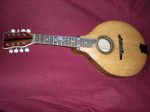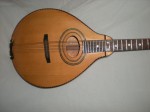Rhapsody in B/W
20 years ago, or so, I was working
in a condo on Locust St. which was owned by a gentleman whose prize
possession was an Aeolian Duo-Art piano, and hundreds of piano rolls,
arranged on shelves that covered every wall, or nearly so. As I
learned from him, this instrument was a “reproducing piano” which
differs from a player piano in that it had hundreds of air hoses
inside , arranged and connected in such a way that they controlled
the force with which the original pianist struck the keys, the pedals
he used, as well as the notes. The effect was a virtual performance
by the original pianist on a full sized grand piano in your parlor.
Rolls were made by by some of the best contemporary soloists, and
occasionally by the composer himself.
In 1987, a cd was released of George
Gershwin’s piano rolls, one of them a Duo-Art full reproduction
version of him playing “Rhapsody in Blue,” which gave me a new
perspective on a tune we’ve heard (or at least heard parts of) all
our lives. The biggest surprise is the tempo at which he played it,
in parts probably twice as fast as you’ve heard, the great
instrumental ability he had, and the overall playful and upbeat
feeling he conveyed in it, which contrasts with most orchestral
versions I’ve heard. It no doubt is one of the best pieces of
American music ever written, and maybe the daunting task of bringing
a fully orchestrated version to life imparts a seriousness that was
never intended. The effect of watching and hearing this is like seeing the ghost of Gershwin, 26 years old when he wrote it, having a lot of fun playing it, a rock and roller at heart.
George G. originally wrote it under the working title “American Rhapsody,” but his brother Ira convinced him to call it Rhapsody in Blue, after seeing an exhibition of Whistler paintings, with names like “Arrangement in Grey and Black,” etc.
THE MANDOLIN
The black and white binding, made of holly and ebony, that I made for this mandolin, reminded me of piano keys, which reminded me of Gershwin, so I think a good name for this one is
“Rhapsody in B/W.”
Here are some sound samples of the “Rhapsody” mandolin recorded by my new friend, Mike Plunkett.
01 Jesu, joy of Man’s desriring
03 Irish
European flamed maple backs and sides, Highly figured Englemann spruce top (from Alaskawoods.com) black and white rosette, ebony and holly highlights, I even located a black tailpiece for this.
I made the sides deeper for this, by 1/2”, it has great volume as a result, a surprise effect was that the sound is bright and not as round as I would have expected.

















